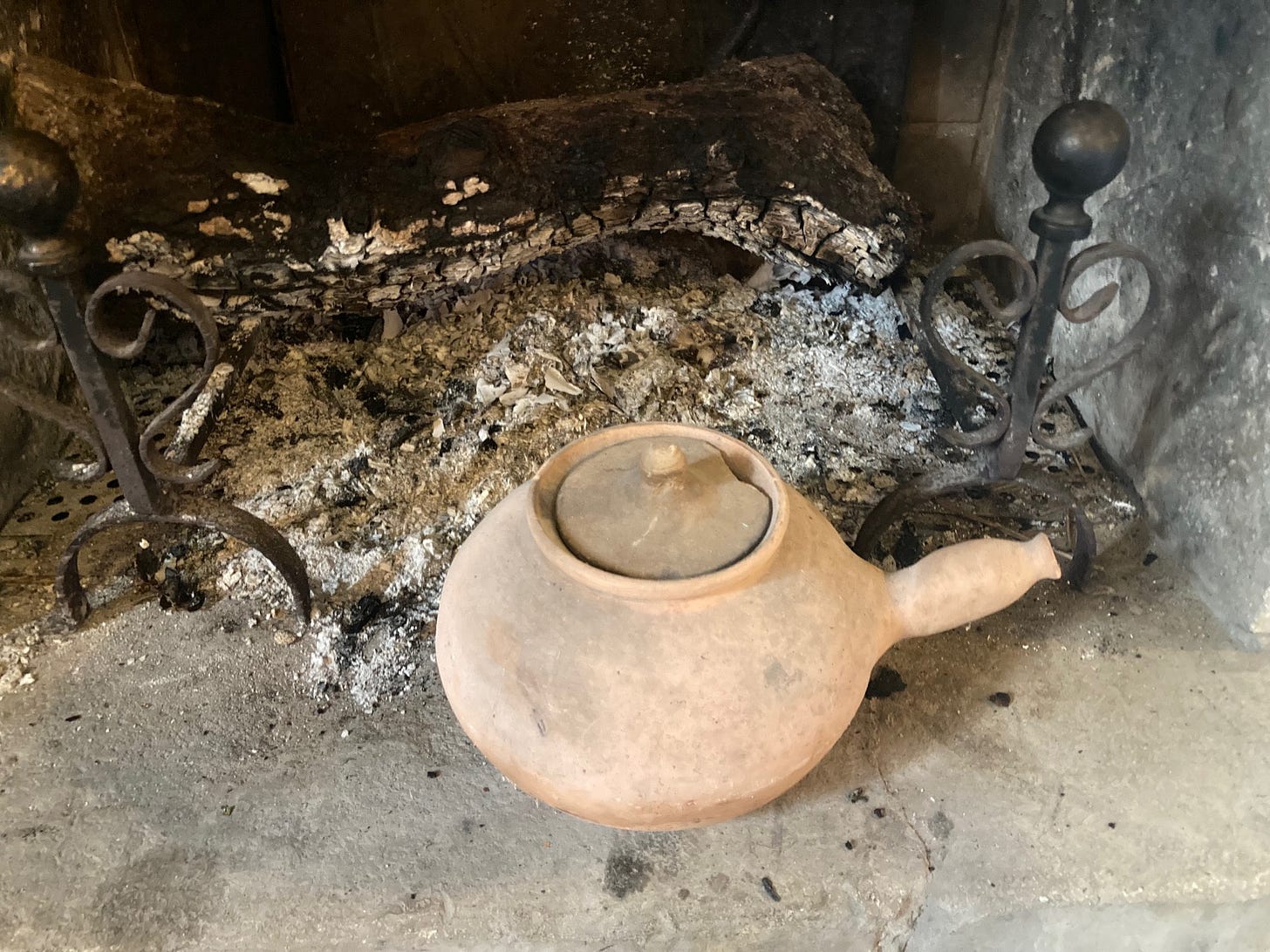The diable.
Seized by Herculean energies – I blame the Olympics – Marie-Dominique has been transforming the Fouras house. Trips to the dechetterie – the town tip – are a daily occurrence, and few rooms have not undergone radical transformation.
The salon in particular, once a sitting room, has lost a couch but found a dining table – which may explain why I noticed for the first time the ceramic object that has sat for decades on the hearth of the open fire, just out of reach of the flames.
“It’s a diable,” she explained.
So that’s what a diable looks like.
Jacqueline Duhême was barely twenty when she went to work as assistant to the Henri Matisse in 1947. Surgery had left the artist, then approaching eighty, mostly confined to his bed or a wheelchair.
Matisse needed help with everything, including meals. Duhême had her baptism of fire when both Matisse's son and the painter's companion, Lydia Délectorskaya, were absent for a few days, leaving her in sole charge of the house and staff, including the kitchen.
Out of the blue, Matisse asked for some of the dishes he'd eaten as a boy in northern France. The first, Flamiche au poireaux/Leek tart with cream, had been a speciality of his mother. The cook knew that recipe, but was baffled by his next request, for Brandade de morue, a purée of dried salt cod. Worse, the artist asked that it be accompanied by Patates au diable, potatoes roasted with garlic, onions and herbs in a clay utensil known as a diable or devil.
"I went to Nice in search of a diable," Duhême recalled. "At last, after trying a number of hardware stores, I was successful. The seller assured me they were far from common in the Midi, and he almost never sold one." The cook faced even more problems in preparing the salt cod, which had to be simmered in milk after being soaked for a day in fresh water, frequently changed. (Cooks on river barges towed the fish behind them, while housewives with flush toilets placed it in the cistern, where the water was refreshed each time someone pulled the chain.)
Jacqueline thought both dishes "terrible," but Matisse was delighted, perhaps because he insisted on washing them down with champagne. For dessert, they shared a fresh pineapple, prepared in the manner taught him by Paul Gauguin, who spent much of his life in Tahiti. Under Matisse's direction, Jacqueline made a series of long deep cuts in the skin, then pulled out lozenges of fruit which they ate with sweet Alsatian white wine.
Incidentally, when Jacqueline visited Picasso in his summer home, La Californie, in the hills behind Cannes, he often invited her to stay for lunch. Eaten in the earth-floored kitchen and sometimes observed by a wandering goat, these meals were anything but gourmet occasions. "Invariably it was vegetable soup, with bread and fruit," she wrote. "Once, he searched everywhere for a can of sardines he'd opened. He finally found them in the refrigerator, frozen solid. He did everything that way. It was all a complete mess, nothing like my boss."





I love how completely authentic these people live their lives! Like the author here!!
Two famous artists with very different culinary tastes!